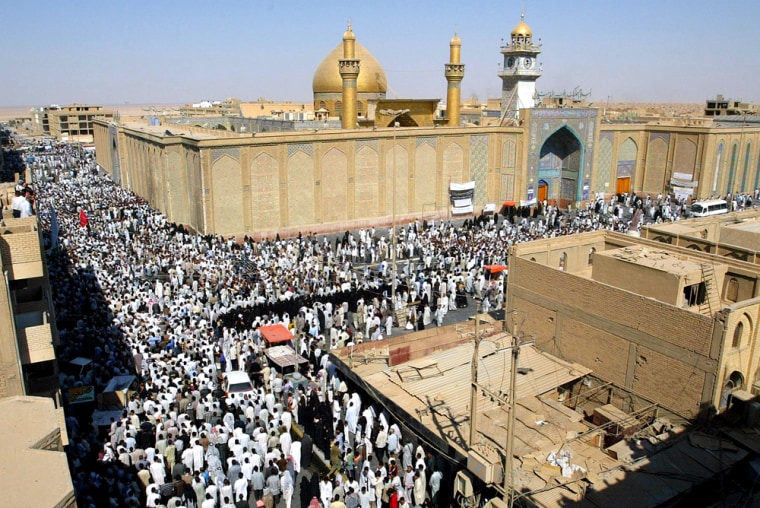The gold-domed mosque of Imam Ali bin Abi Talib — named after the slain cousin and son-in-law of Islam’s prophet Muhammad — has been revered by the world’s 120 million Shiite Muslims as a place of pilgrimage for centuries.
Historians say the mosque was built in 977 in Najaf, a city regarded by Shiite Muslims as the faith’s third holiest in the world after Mecca and Medina in Saudi Arabia.
It is said that the family of Ali buried his body secretly in Najaf soon after his death in 661. His burial place stayed a secret until the 8th century.
His tomb was said to have been burned and rebuilt in 1086, before being rebuilt yet again in about 1500. The mosque sits atop Ali’s tomb.
Since the 8th century, Shiite families have moved from the nearby city of Kufa to Najaf to be close to the shrine and to serve pilgrims. Shiite Muslims looking for religious education have also been studying in Najaf for centuries.
Shiites believe Adam, the biblical first man, is also buried at the same mosque.
Islam has been divided into the orthodox Sunni and minority Shiite sects since shortly after the death of the Prophet Muhammad, founder of the religion, in 632.
Sunnis accepted Abu Bakr, a respected contemporary of the prophet, to lead what was then an international political as well as spiritual empire. A small group, the “shi’at Ali,” or party of Ali, followed the much younger Ali, Muhammad’s son-in-law.
Ali would eventually head the Islamic empire, but the rivalries between his followers and supporters of others who claimed leadership in the generations after Muhammad’s death periodically exploded into violence and had a profound impact on the development of Islam.
In a 7th-century battle rooted in the dispute, Sunnis killed Hussein — Ali’s son and Muhammad’s grandson — and his 72 companions on the plains of Karbala in what is now Iraq. Shiites mark Hussein’s death in emotional annual rituals.
The Shiite veneration of Ali and Hussein — both of whom have tombs in Iraq that attract thousands of pilgrims — is at odds with the practice of Sunnis. Sunnis accuse Shiites of treating Ali and Hussein as saintlike intermediaries between man and God, and insist none is needed.
Najaf, whose name in Arabic means “a high land,” is located about 110 miles south of Baghdad on a high desert plateau overlooking the world’s largest cemetery, where Shiites aspire to bury their dead.
Najaf also is a center for scientific, literary and theological studies for the Islamic world.
